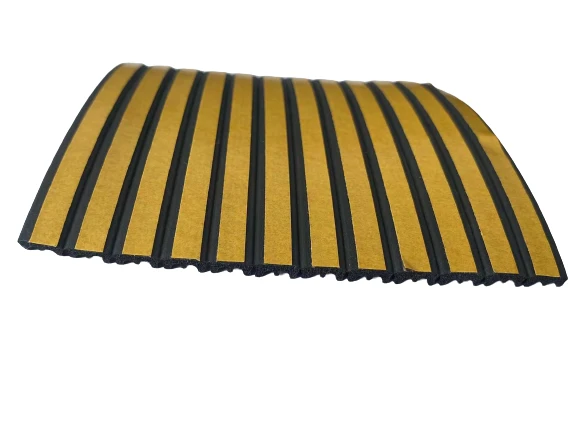Dec . 07, 2024 09:24 Back to list
Replacing Rubber Seal for Refrigerator Door to Improve Efficiency and Prevent Leaks
Replacing Your Fridge Door Rubber Seal A Comprehensive Guide
When it comes to maintaining a refrigerator, one of the most essential components to check regularly is the door seal—or gasket. This simple rubber material plays a crucial role in ensuring your fridge operates efficiently by keeping the cold air inside and the warm air outside. Over time, however, these seals can wear out, leading to increased energy bills and spoiled food. In this article, we will discuss the importance of the fridge door rubber seal, signs that it needs replacement, and a step-by-step guide on how to replace it yourself.
Importance of the Fridge Door Rubber Seal
The rubber seal around your fridge door is what keeps the cold air in and prevents warm air from entering. When the seal is intact and in good condition, your fridge can maintain a stable internal temperature without having to work overtime. Energy efficiency is not just about saving on utility bills; it also extends the lifespan of your refrigerator. A worn-out seal can cause the fridge to overwork, leading to decreased efficiency and potential mechanical failures down the line.
Signs It’s Time to Replace the Seal
Knowing when to replace the door seal is critical for maintaining optimal fridge performance. Here are some common signs to look out for
1. Visible Damage Look for cracks, tears, or warping in the gasket. If the seal appears worn or damaged, it’s time for a replacement.
2. Increased Energy Bills If you notice your electricity bills climbing without any change in usage, a faulty door seal could be the culprit.
3. Condensation Inside the Fridge Excess moisture inside the fridge can also be an indicator that the seal isn't functioning properly.
4. Temperature Inconsistencies If food is spoiling faster than usual or if you notice one area of the fridge is significantly warmer or colder than another, your seal may be compromised.
5. Door Sticking or Misalignment If the door is hard to open or closes with difficulty, it could indicate a seal issue.
How to Replace the Fridge Door Rubber Seal
If you’ve determined that your fridge door seal needs replacing, don’t worry. This is a straightforward DIY task that you can accomplish with minimal tools. Follow these steps
fridge door rubber seal replacement

Step 1 Gather Your Supplies
You will need - A replacement rubber seal (available at appliance stores or online) - A screwdriver (if screws are involved) - Warm, soapy water - A cloth for cleaning
Step 2 Remove the Old Seal
1. Detach the Old Seal Depending on your fridge model, the seal may be held in place with screws or simply wedged into a groove. If screws are present, use the screwdriver to remove them. If it’s a friction fit, gently pull the old seal off.
2. Clean the Area Once the old seal is removed, clean the area where the new seal will go. Use warm, soapy water to remove any grime or debris that may have accumulated.
Step 3 Install the New Seal
1. Align the New Seal Take your new gasket and align it with the door. Start from the top and work your way down, ensuring it seats well into the groove.
2. Secure it in Place If your model requires screws, make sure to screw them in evenly. Avoid overtightening, as this might damage the seal or door.
3. Test the Seal Once installed, close the fridge door and check the seal by performing the dollar bill test. Slide a dollar bill between the seal and the door. If it pulls out easily without resistance, the seal may not be fitted properly.
Step 4 Final Checks
After replacing the seal, monitor the fridge for a few days. Check for changes in temperature and ensure it’s working efficiently. If everything appears in order, you’ve successfully completed the task!
Conclusion
Replacing the fridge door rubber seal is a vital maintenance task that can prolong the life of your appliance, save energy costs, and prevent food spoilage. Regular checks and timely replacements can keep your fridge running efficiently for years to come. So, take the time to inspect your seal and act when necessary—it’s a small effort that pays off in the long run.




